Circa. 2010 Pics 2017
Well, maybe. Maybe not. But I do own one of the largest intact Woolly Mammoth tusks found in recent years, and it has starred in a National Geographic episode as a potential relict of the bad times. There are indeed some unusual features to my tusk; odd marks, iron blotches, magnetic areas and such. It has also been the subject of study by Jon Hagstrum when he is not working at USGS. In fact, Jon fashioned a fine circular sample saw we used to take plugs from the beast, with Jon directing the action by cell from Menlo Park.
Here is an article in Nature concerning the Tusk’s cosmic connection: Mammoth tusks show up meteorite shower, Nature, December 12, 2007
Keep in mind, however, the eight tusks identified here, including mine pictured in Fig #2, are not purported by the YD team to be from the 12.9K event, as the team had first suspected (and is often misreported). These bones all date to another time, 32K to 36K years ago, as revealed in the National Geographic episode. Therefore — though the tusks and skulls are curious — and may be evidence of catastrophe in an earlier time — they were a bit of a red herring with regard to the 12.9K event. More later.
But, for now, here are a few pics of my 110 inch long, 61 kilogram ancient ivory baby:


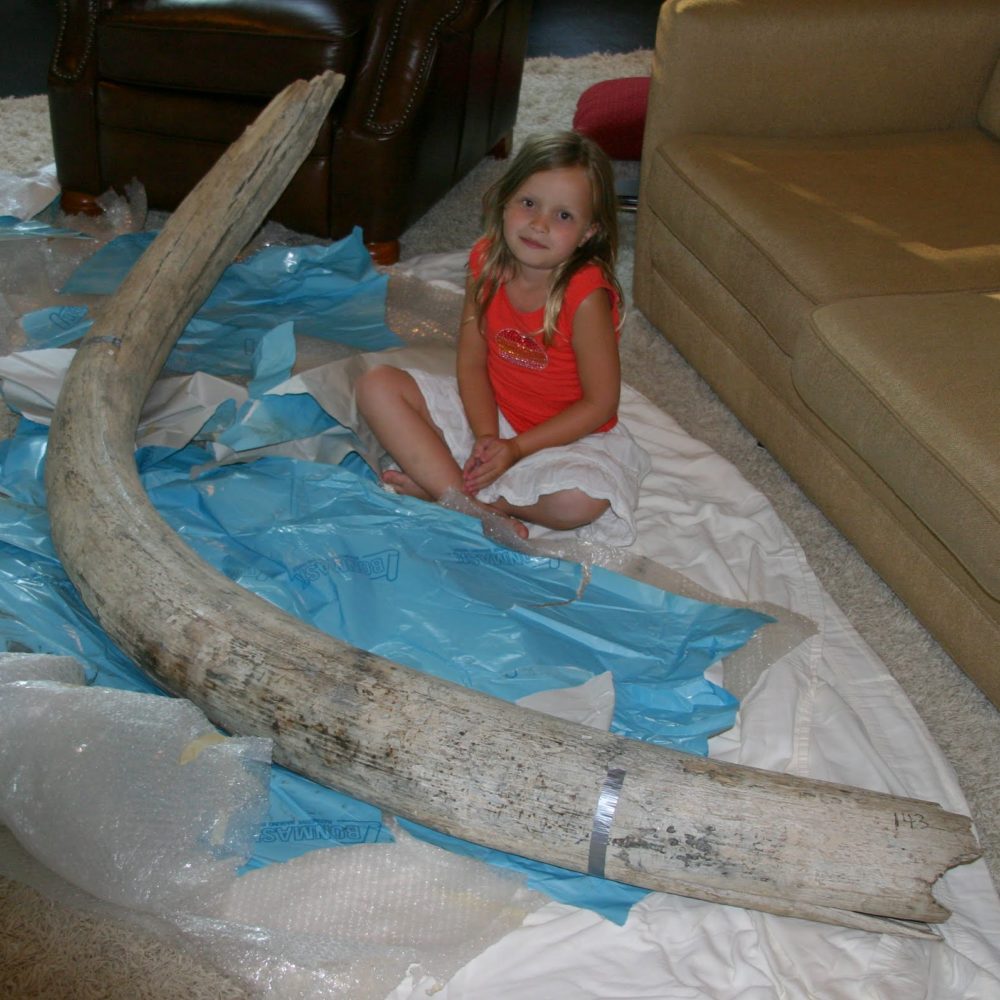
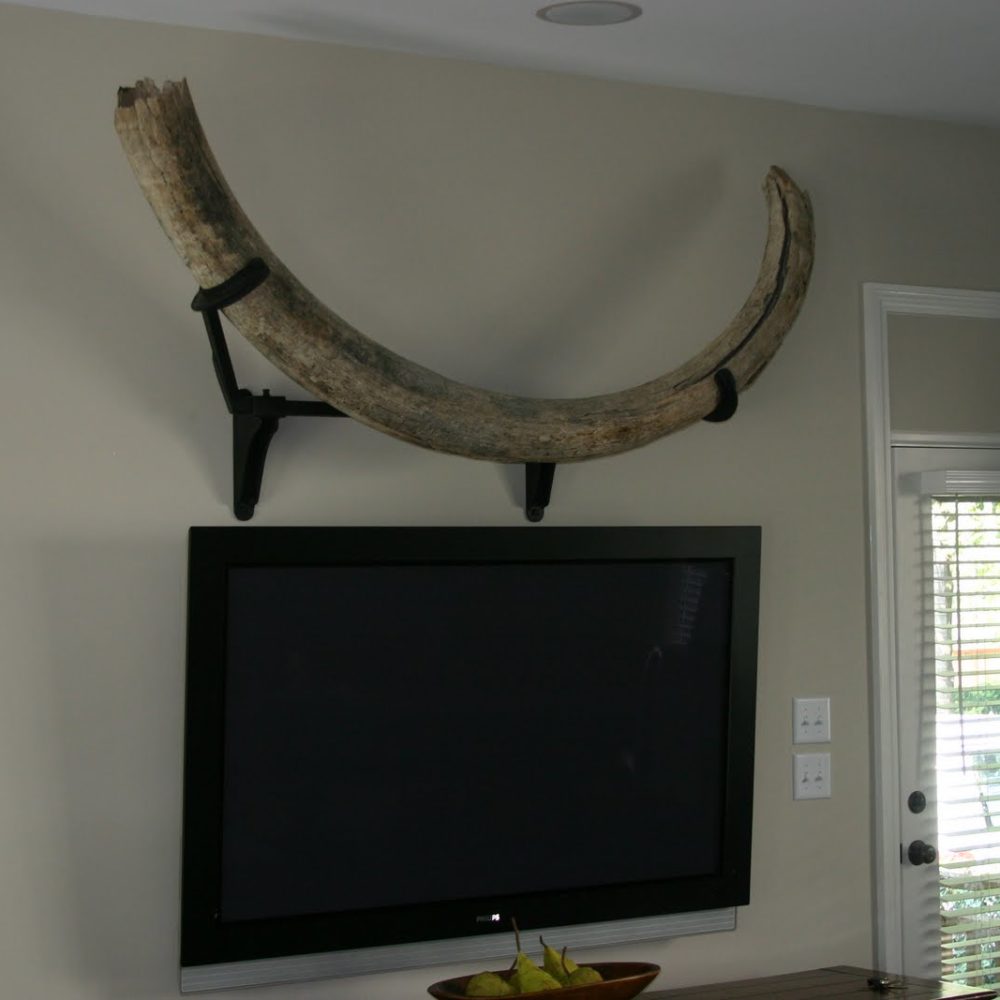
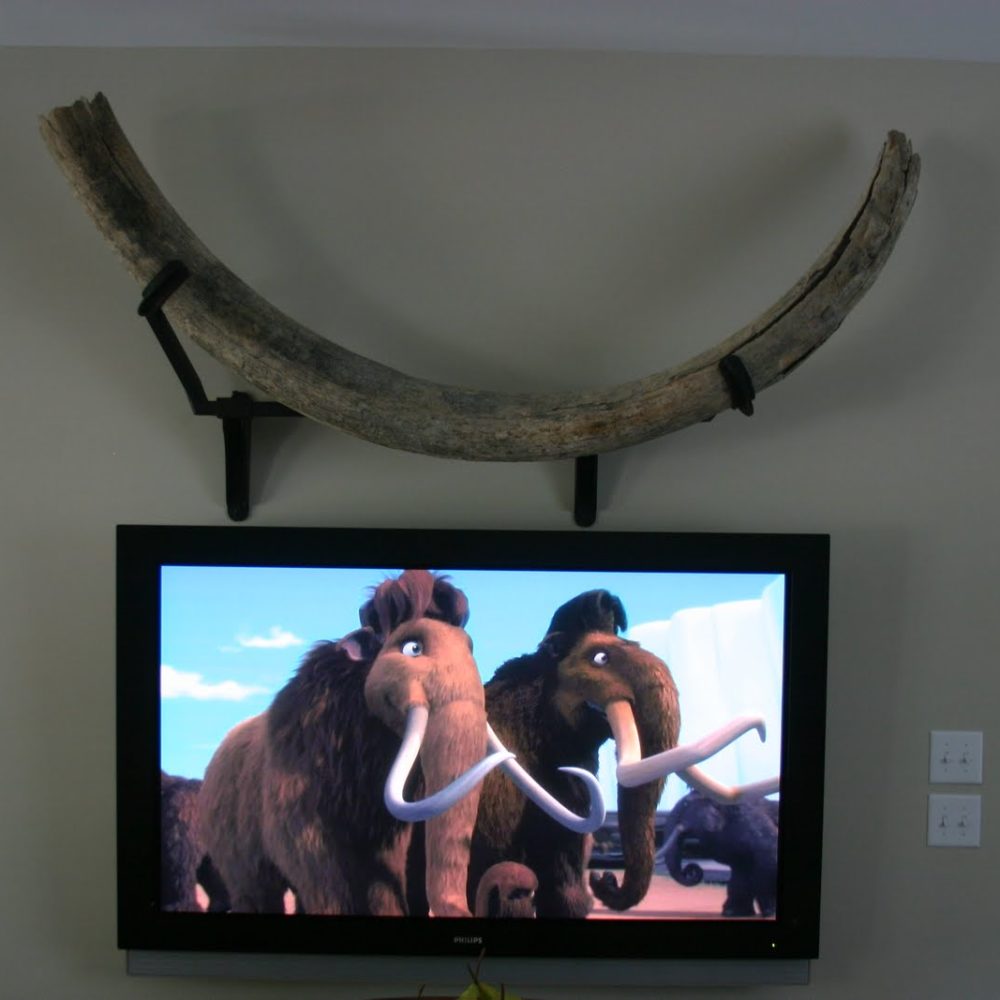
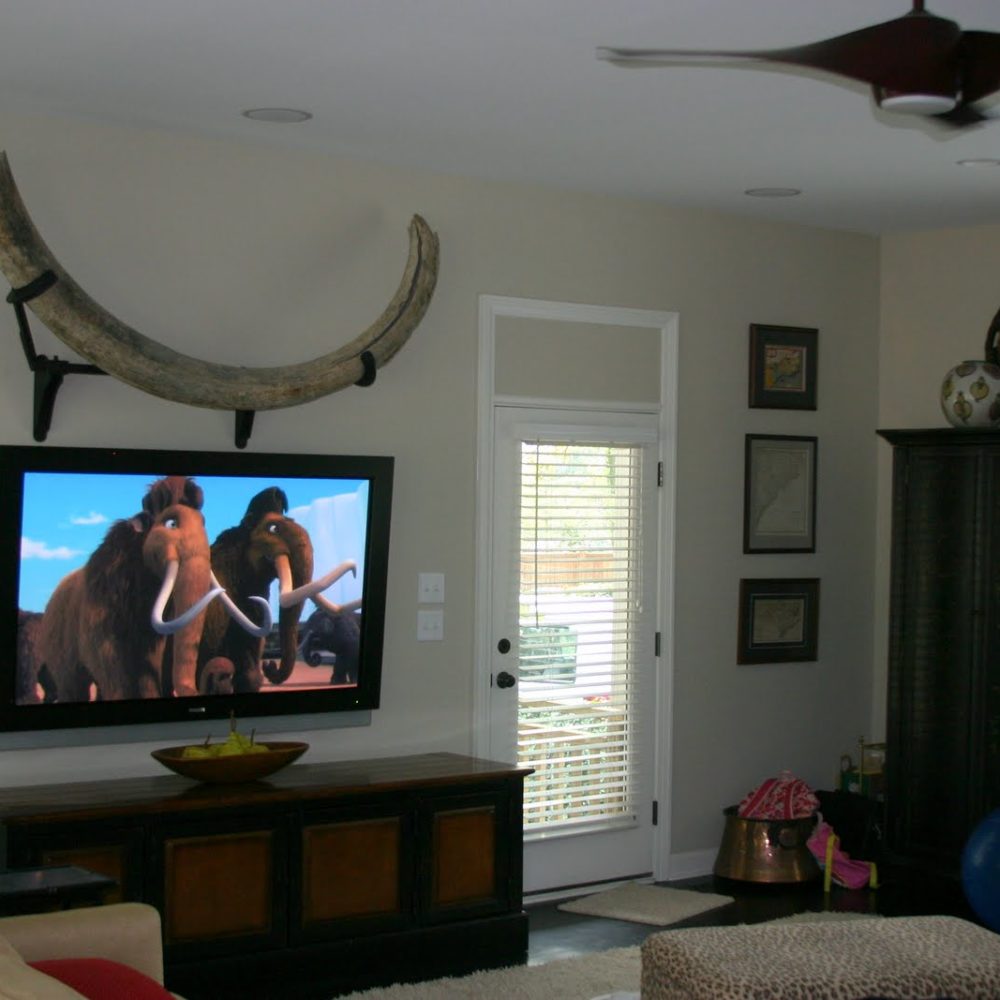
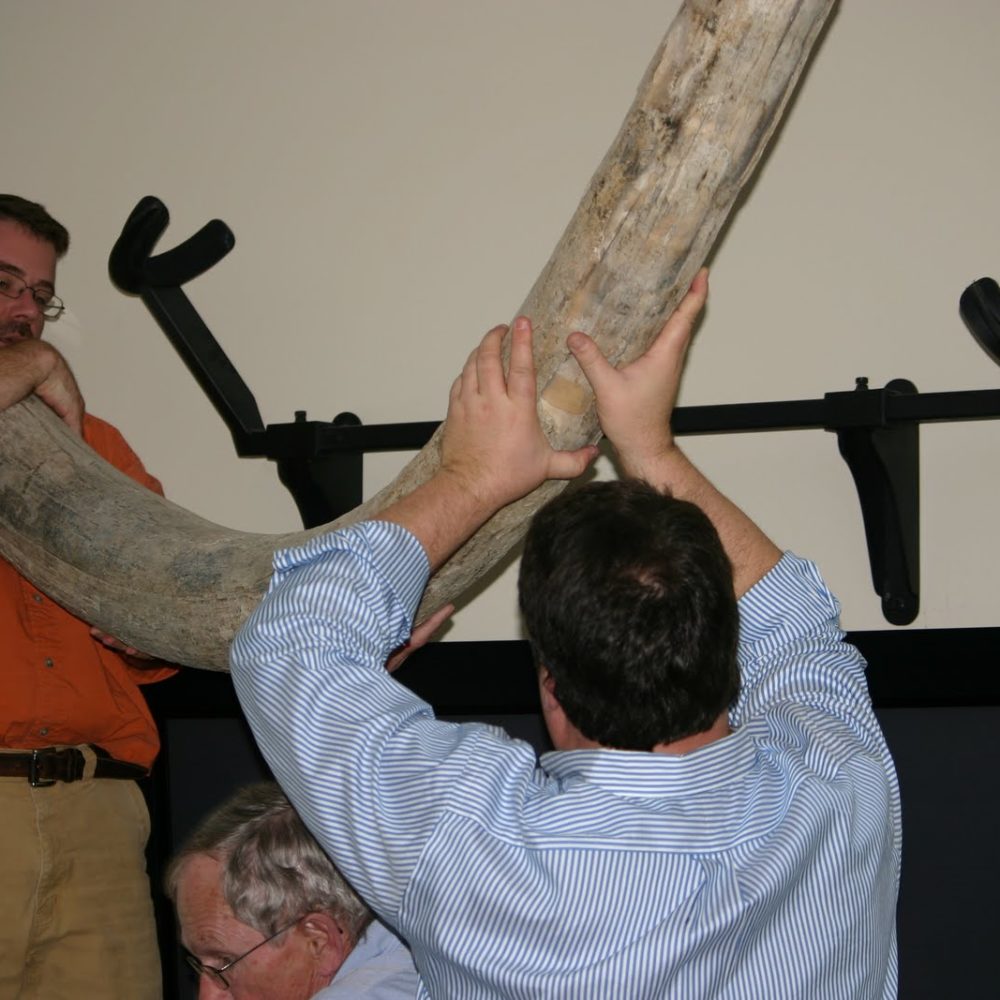


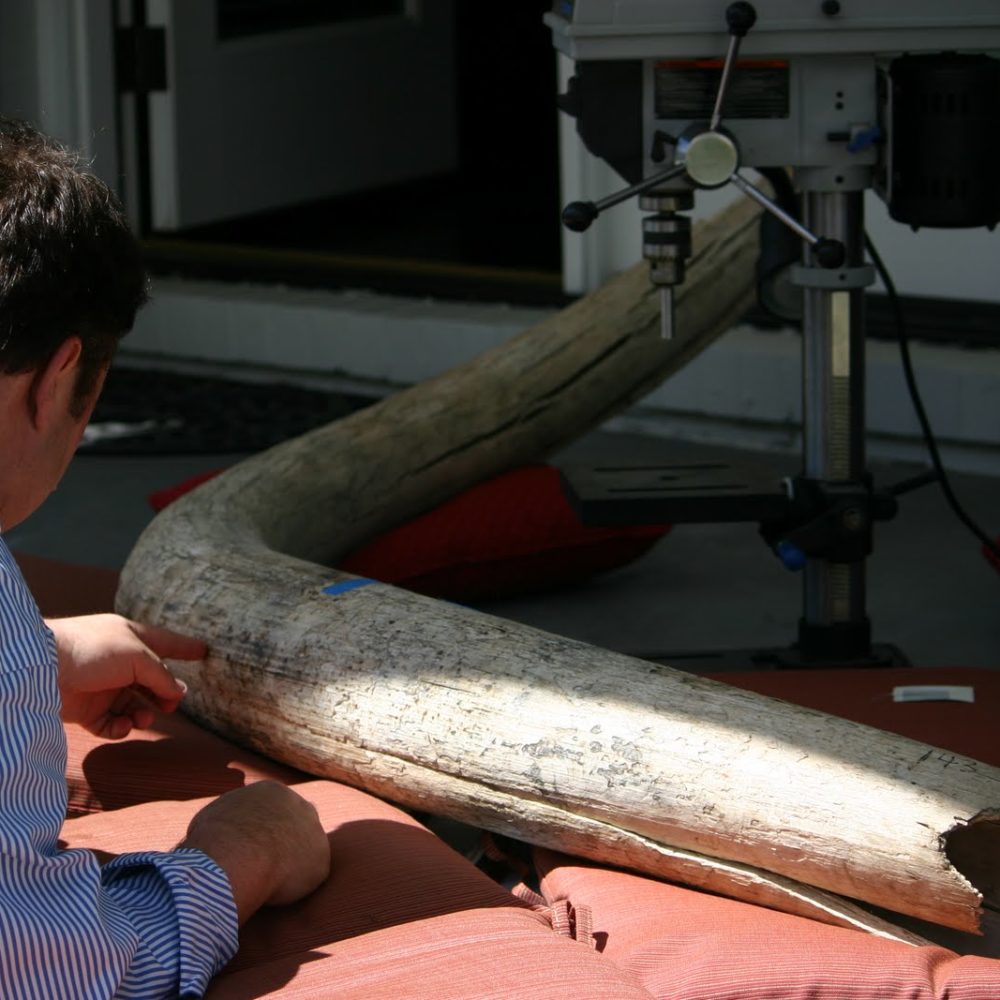
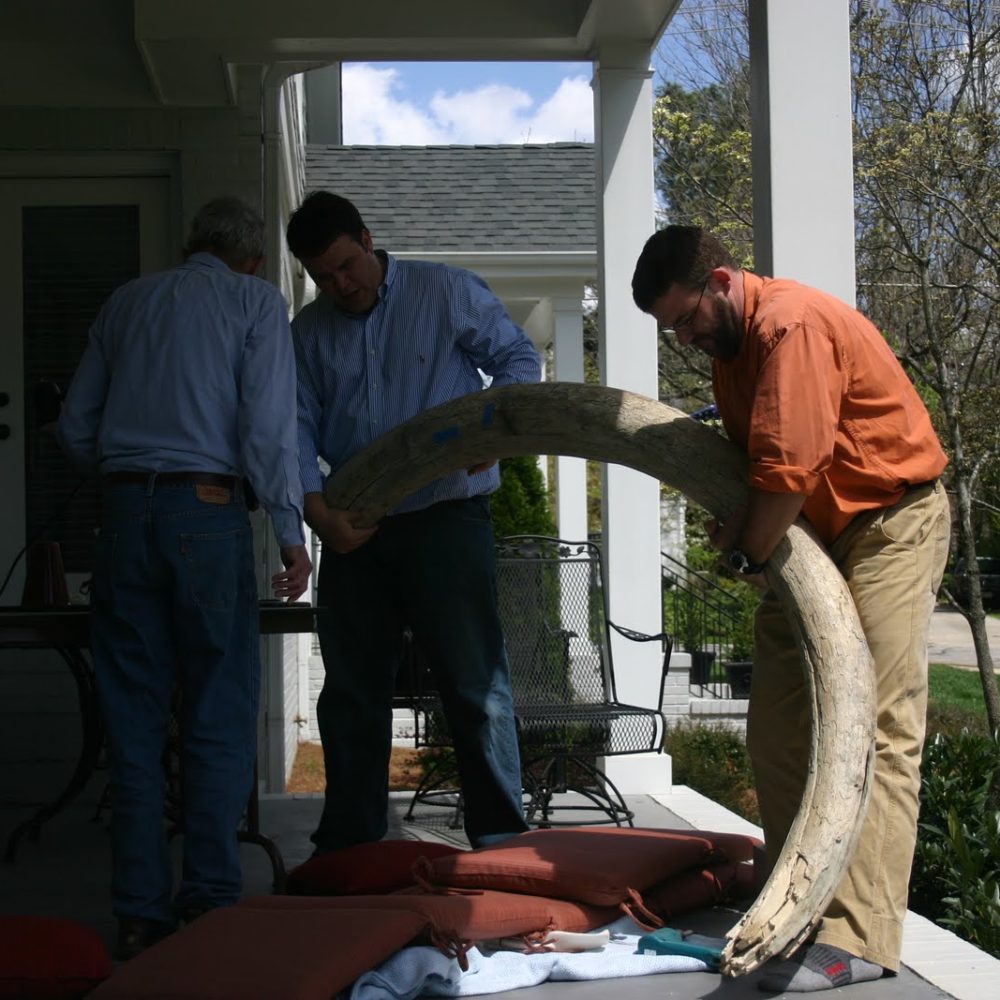

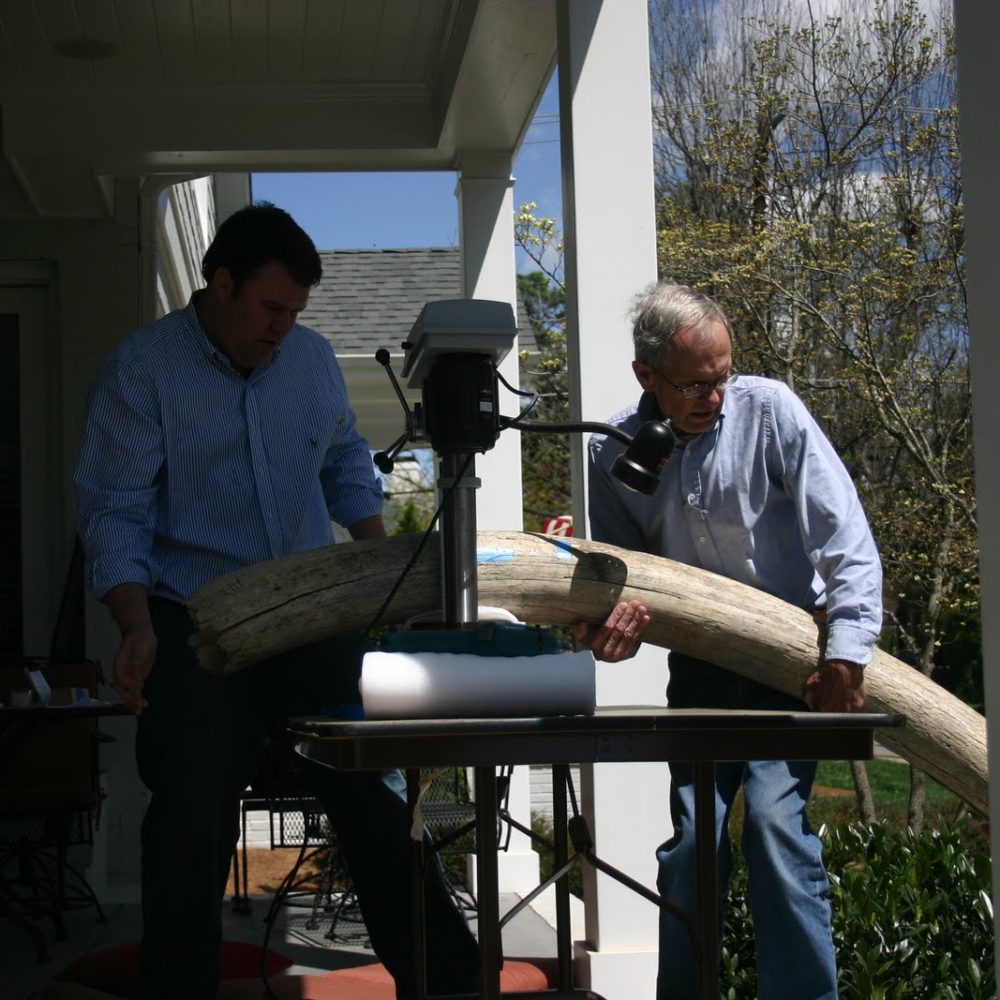
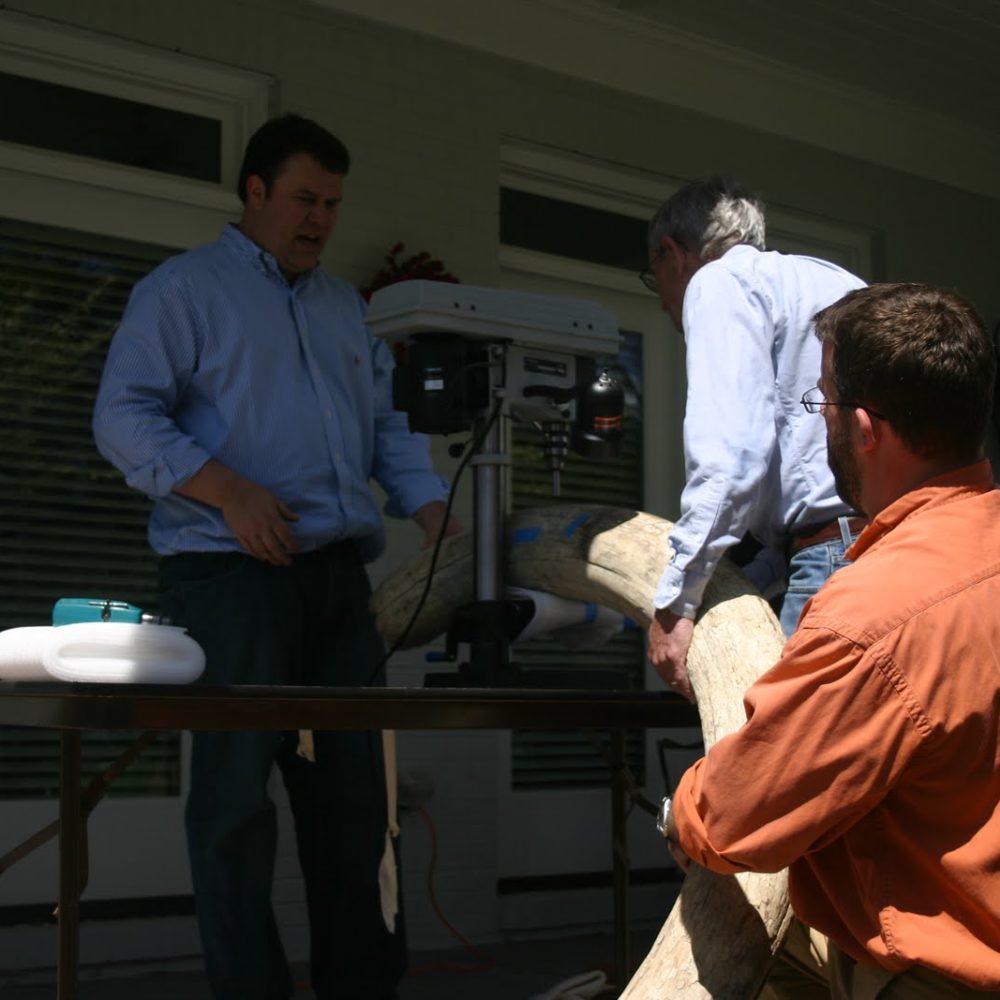
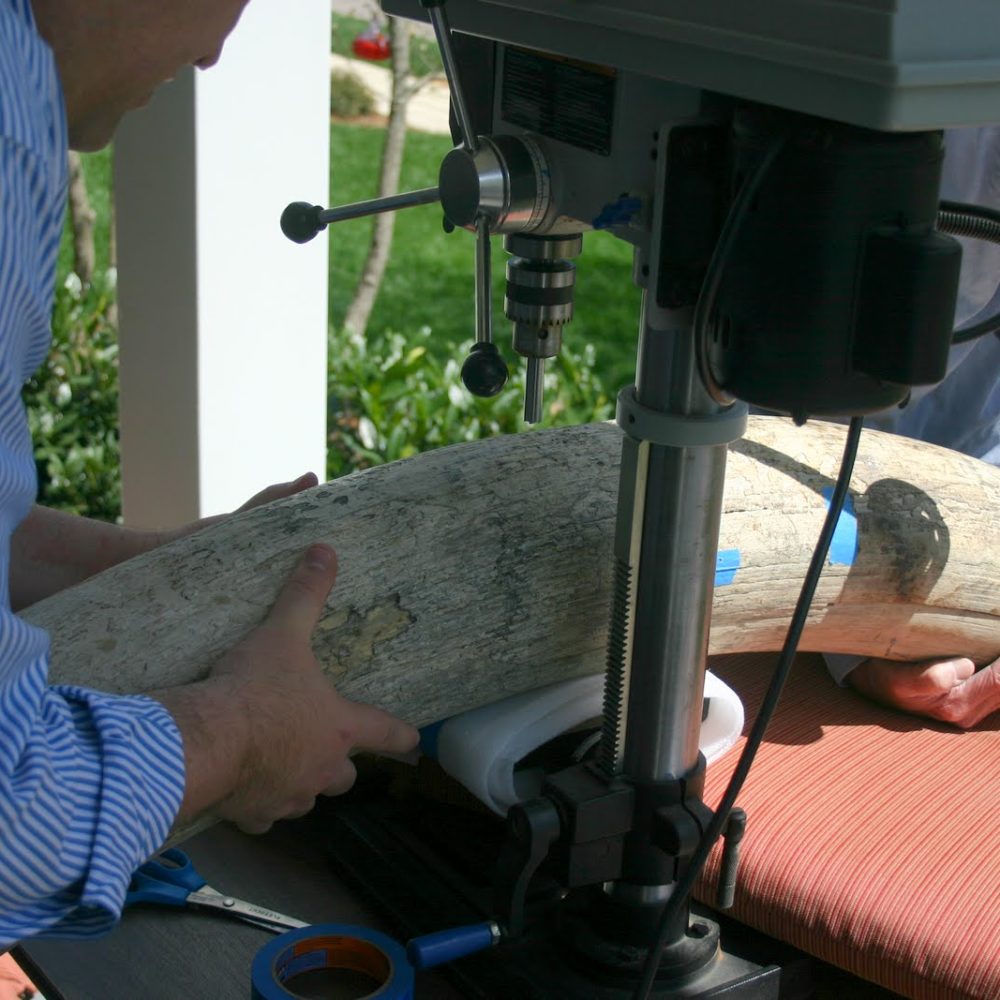
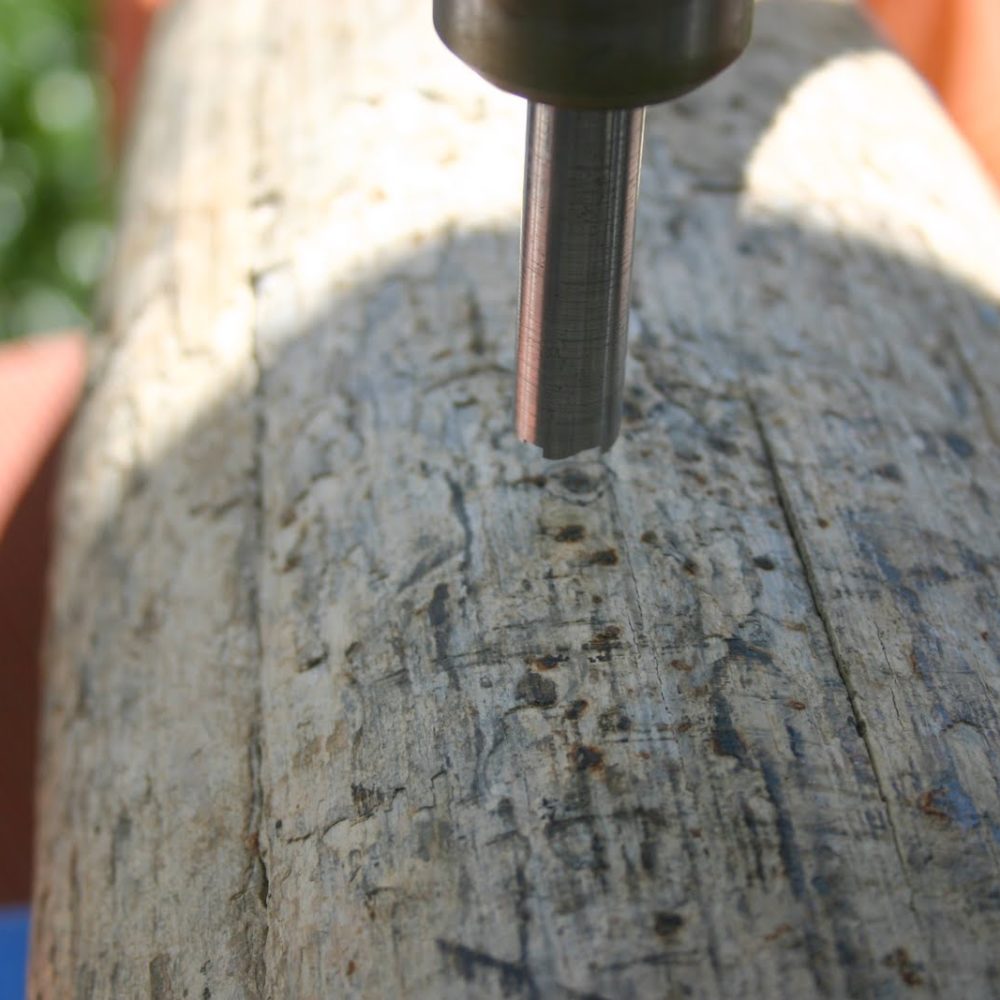
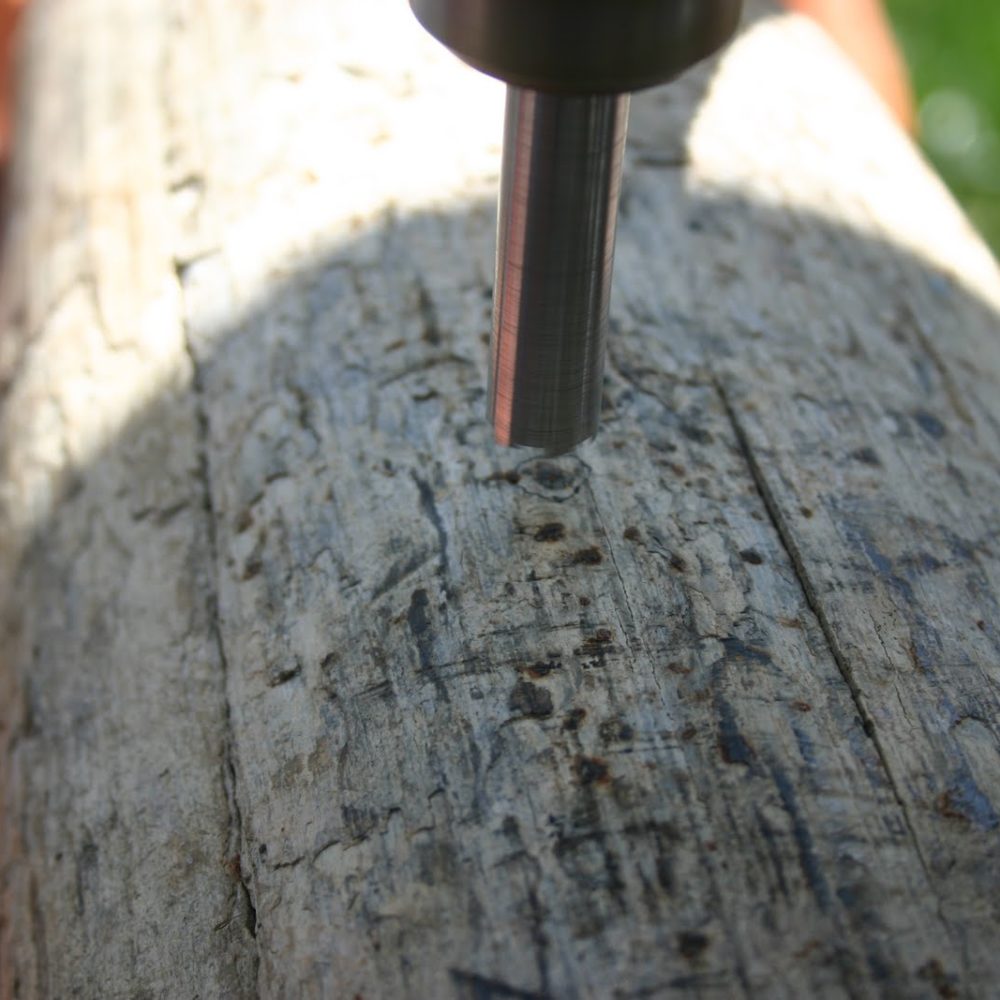
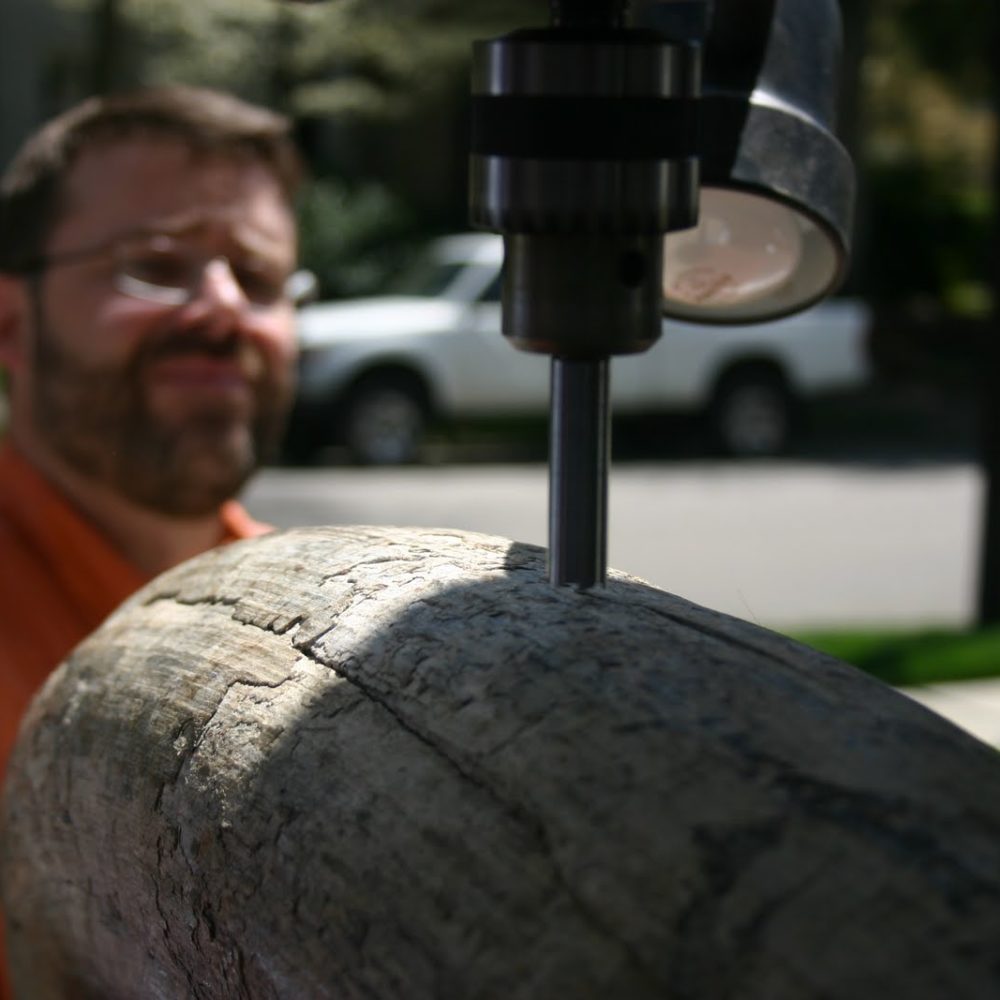
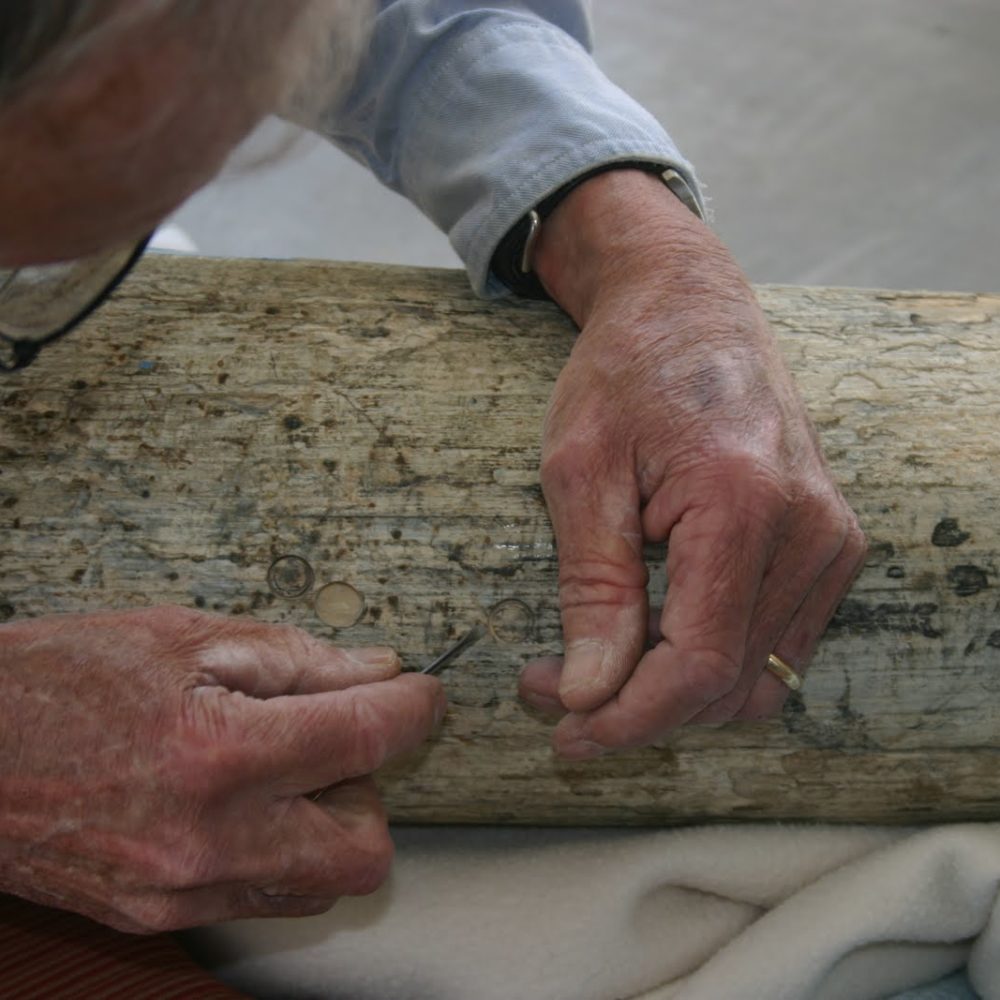
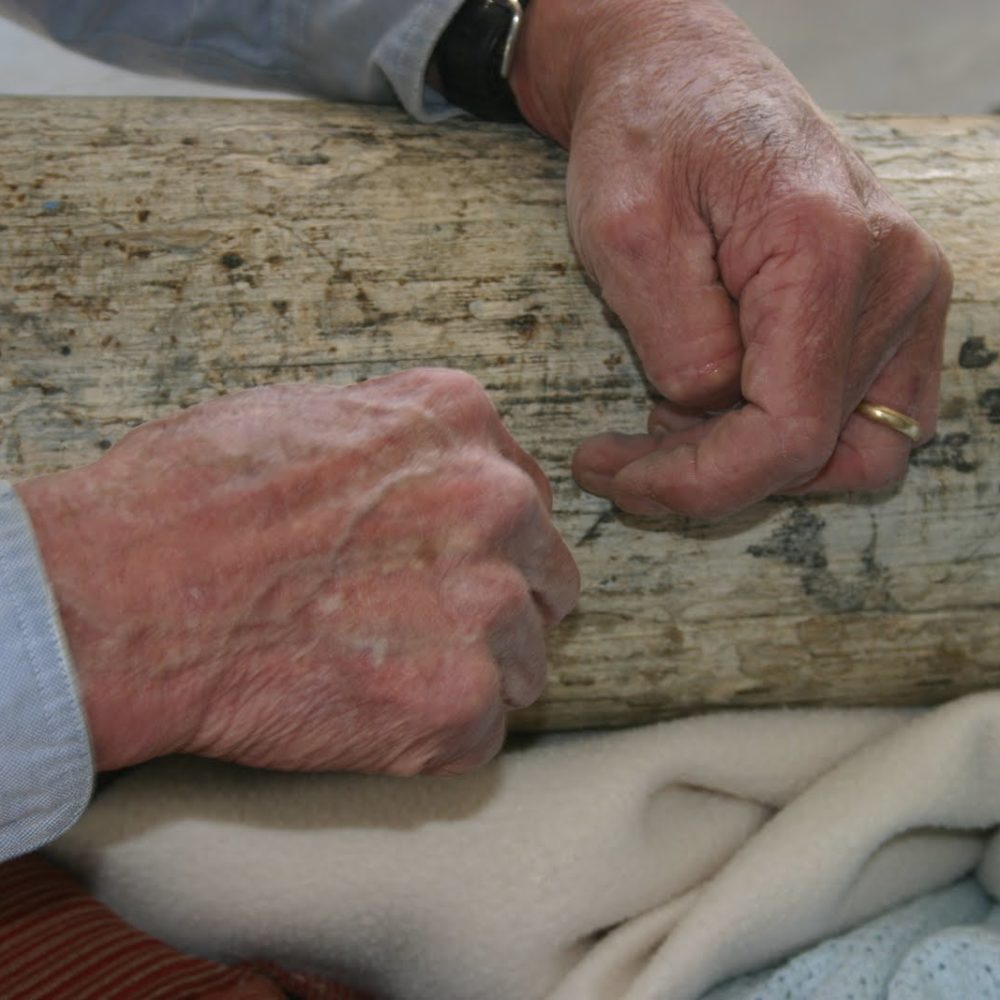
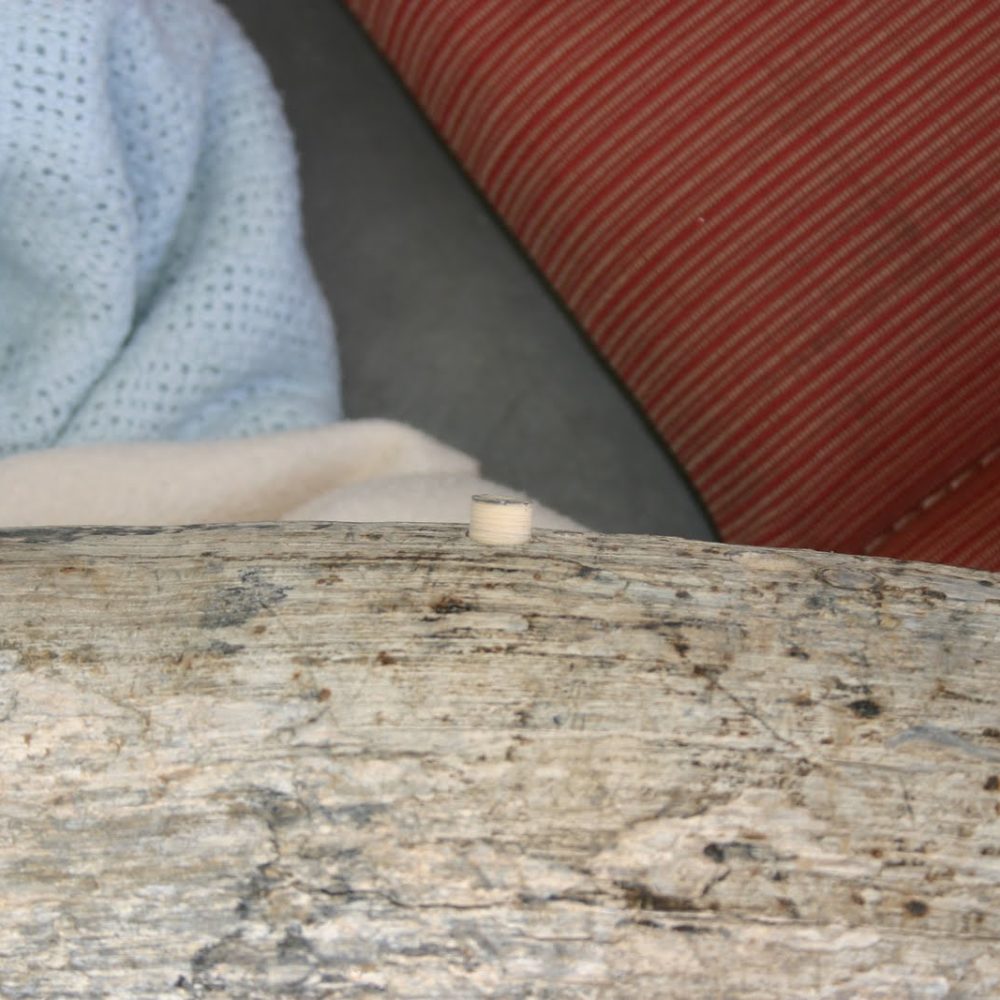


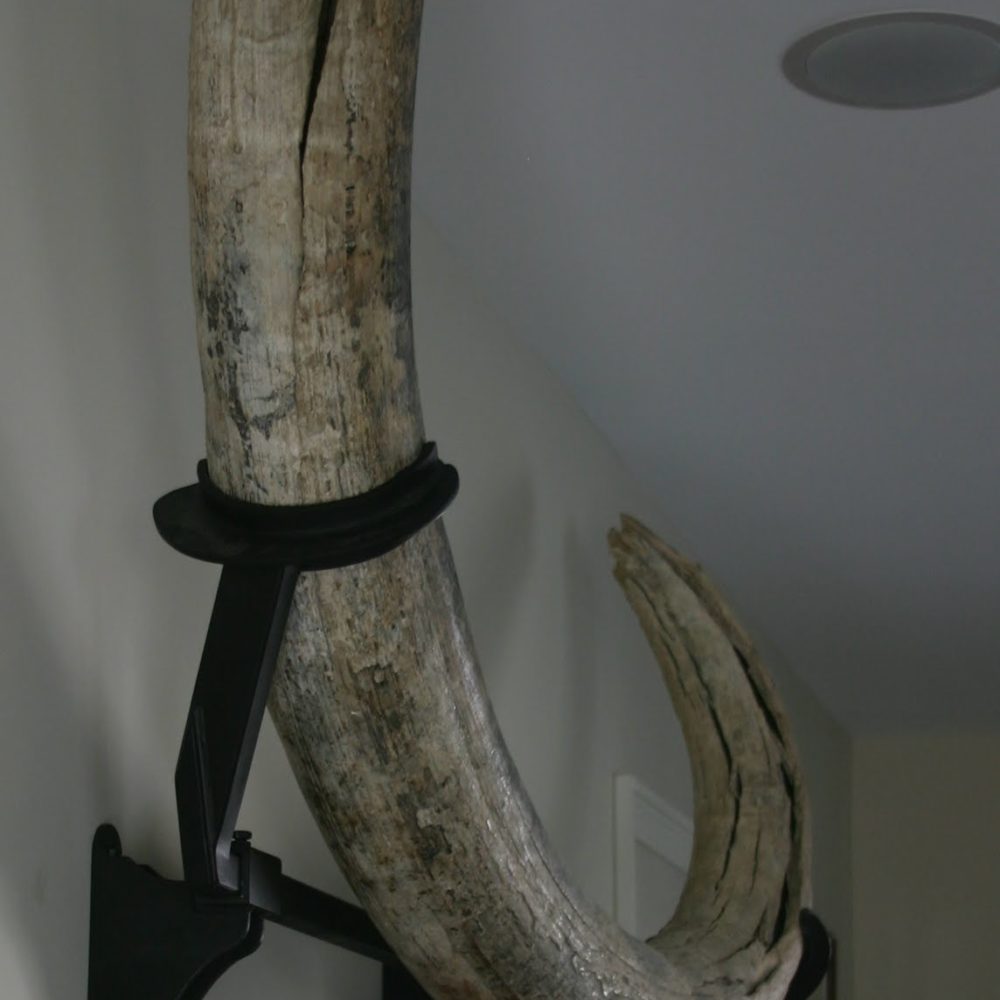
Great site. Love the slide show of the getting the tusk samples.
Way to go! This is great. Look forward keeping up with the tusk. 🙂
Great site. Love the slide show of the getting the tusk samples.
Way to go! This is great. Look forward keeping up with the tusk. 🙂
Thank you so much, girls. You add so much to The Tusk!
Thank you so much, girls. You add so much to The Tusk!
complete bullshit
stay scientific
Jerk
Is the 32-36K taking into account the possible / alleged Carbon-14 anomalies due to radiation?
I wonder whether you can (a) date the age of the mammoth from carbon dating samples at the tip and the base of the tusk. (b) estimate the year of death, and compare to other mammoths, to see whether they died at different times, or during the same event?
Hi George –
It looks like your friend at USGS has filled the vacancy left by Shoemaker.
He’s also someone working outside of Morrison’s control/influence.
If you need help, contact Dorothy Norton, she knows everyone in the mammoth field.
I ran across this Nature paper from 1987:
The date stood out, though one has to take into account that their date would have been several IntCal calibrations ago, how where THAT calibrated 12,800 bp date compares to today’s 12,800 date is uncertain.
But it certainly can be in the conversation regarding the YDB.
Coincidentally, I ran into this article today from the New Yorker issue of December 16th:
“The Lost World” – http://www.newyorker.com/reporting/2013/12/16/131216fa_fact_kolbert
It is about Georges Cuvier and his discovery and even NAMING mammoths and mastodons. I have not yet finished it yet, but it’s been really interesting so far.
That article is Part ONE.
Part Two of The Lost World is here: http://www.newyorker.com/reporting/2013/12/23/131223fa_fact_kolbert
In Part One, this is the author’s take on Cuvier’s thinking:
It was left to later researchers to do that “conjecturing,” and along came others nearly two centuries later.
In this we are philosophical descendants of Cuvier. It is VERY apropos that he started out focused on the same extinct animals – mammoths – as did Richard Firestone and his present-day cohorts.
Gloriously, this is exactly the reason that climate change could not have sent the mammoths to oblivion until Cuvier came along and identified them. At least climate change on the order of what the “Climate Change done it” scientists argue. After all, look at the degree of climate change the mammoths and other animals DID survive and even proliferated during and after. “Confronted with such changes, organisms simply moved on and survived.” Many such climate changes had no effect whatsoever. What was the difference when they were finally erased from existence? It was no mere climate changing, even severely. Even severe ones had been taken more or less in stride; the organisms merely moved on and survived.
And, as Cuvier could have only “conjectured” if he were not so opposed to such conjectures, these extinctions of multiple organisms came in bunches. What occurred to one species happened to many. Each additional species gone represented more argument against climate change being the cause. It is not an ironclad argument against climate change, but it is a high bar to surmount.
The term “Basin” in caps here brings to mind the Michigan Basin. For those who are not aware of it, the geological map of Michigan Basin looks like a bull’s-eye.
See http://geology.about.com/library/bl/maps/michmappalm.gif
And then see how it ties in with even farther flung geological features here: http://www.uwgb.edu/dutchs/Graphics-Geol/structur/basins4.gif (simplified diagram)
Now with this mention of the Paris Basin it seems I might have to go take a look.
The man was precocious! Or perhaps it is just that he was free of later requirements to fit everything into a gradualist theme.
“…just beyond the edge of recorded history” . . . WOW. And what do we still see today? Agriculture and writing and the wheel and domestication of animals – all of these were “invented” at the same point in time. And that time appears to researchers to be at the end of the Younger Dryas, the 1300 year ice age after the YDB. The beginning of recorded history. Cuvier was closer than he might have had reason to believe. If he could see what the YDB research is bringing to the fore, he might be thrusting his fist in the air, even from his grave.
It is amazing to read how close Cuvier came to what we are all witnessing today. As Cuvier came to his conclusions based almost solely on anatomy, now is being added masses of forensic evidence within the rocks, and they all scream the same message: A great cataclysm and dead mammoths everywhere.
…Except on Wrangle Island and its pygmy mammoths. Where, Cuvier would argue, the “agents she [Nature] employed… would have been” insufficient “to produce her former works.” In other words, on Wrangle Island the cataclysm was not intense enough to kill them all off. It would be a good research topic to find out if the pygmy mammoths were always pygmies, or if the pygmies only dated back to 12,800 years ago…
Enough for now. The article is a good read, and recommended reading.
Steve; Greetings from the Great White North. No signs of global warming here. It’s been 30-35 yrs since it’s been this cold and snowy. I’m wondering if there’s been another impact in Russia that they haven’t mentioned and we are now in another YD. I was beginning to like this global warming thing. We need throw more junk in the air so’s to warm things up again. CO2 is not cool and I’m all for it.
You guys are idiots. You diminish this blog.
Just FYI.
Hi Steve –
Wrangel Island’s pygmy mammoths were about the size of large dogs.
Thus the collapse of their food supply was not enough to kill them off.
There were other factors involved in producing their local climatic niche.
TLE –
What exactly is the point you are making????
Mr. Elifritz; Sorry to have offended you with my attempt to deal with this abysmal cold weather.
Ed; I saw a program on TV the other night about the Serpent mounds at various places around the globe. The one in Ohio was touched on and the egg the serpent is supposedly holding was mentioned as possibly being the sun disc as in an eclipse. Could it also be interpreted as being a cosmic impact that took away the sun?